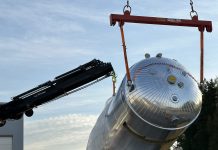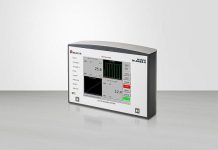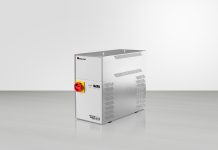In metal machining, stress is a constant factor which has the potential to compromise the quality of the components produced. Brought about through traditional manufacturing methods, there are two common types of stress – thermal and cutting edge. Here, Karl Hollis, Engineering Director at Precision Micro explores these common problems and their impacts, and suggests how stress can be eradicated to consistently produce components of the highest quality.
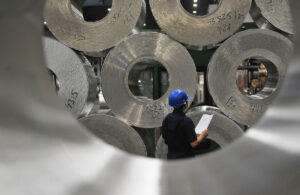 To create products of the highest quality, manufacturers in every sector – from automotive and aerospace through to medical and electrical – rely of the integrity of individual metal components. Even the slightest compromise can lead to significant disparities in the quality of final products, be they safety critical ABS braking systems or corrosion resistant microfilters. Now, as manufacturing becomes more competitive than ever, every advantage counts. To achieve the highest levels of quality, the critical issues of thermal and cutting edge stress must be overcome. In order to understand the negative impacts these problems can have, it’s important to know how they originate. Let’s look at each in turn. Thermal stress, as its name suggests, is a result of heat generated within the metalworking process and is most closely associated with laser cutting. In practice, this heat has the potential to deform the material. Even where deformities occur only at a micron level, the slightest imperfections can directly limit the effectiveness of laser-cut components, often making them unsuitable for applications which demand uncompromising levels of quality. Cutting edge stress, on the other hand, is a result of stamping. Here, the obstacle of thermal stress is replaced by physical stretch on the cutting edge. A result of the shearing process, where cutting steels are used to cut sheet metal and create the desired components, the physical stress often extends beyond the cutting edge. Having a detrimental effect on the flatness of the blank, component quality is ultimately compromised. Where parts are required to meet high levels of precision, these shortcomings must be overcome – or avoided entirely. Naturally, much work has been undertaken to reduce the impact of these two common types of stress. Thermal stress, for instance, has been the subject of much academic research which has enabled thermal stress fields to be accurately predicted and accounted for. Likewise, post-machining techniques like overbending have been developed to rectify problems stemming from cutting edge stress. The problem here is that these fixes add time, cost and complexity to machining processes, potentially having a negative impact on a manufacturer’s competitiveness in the marketplace. Additionally, manufacturers should consider whether overengineering flawed solutions is a compromise which could be reflected in their final outputs. At Precision Micro, we believe that these problems are fundamentally engrained in the traditional sheet metalworking methods of laser cutting and stamping. And, rather than attempt to fix them, manufacturers should look to alternative methods in order to enhance component quality.
To create products of the highest quality, manufacturers in every sector – from automotive and aerospace through to medical and electrical – rely of the integrity of individual metal components. Even the slightest compromise can lead to significant disparities in the quality of final products, be they safety critical ABS braking systems or corrosion resistant microfilters. Now, as manufacturing becomes more competitive than ever, every advantage counts. To achieve the highest levels of quality, the critical issues of thermal and cutting edge stress must be overcome. In order to understand the negative impacts these problems can have, it’s important to know how they originate. Let’s look at each in turn. Thermal stress, as its name suggests, is a result of heat generated within the metalworking process and is most closely associated with laser cutting. In practice, this heat has the potential to deform the material. Even where deformities occur only at a micron level, the slightest imperfections can directly limit the effectiveness of laser-cut components, often making them unsuitable for applications which demand uncompromising levels of quality. Cutting edge stress, on the other hand, is a result of stamping. Here, the obstacle of thermal stress is replaced by physical stretch on the cutting edge. A result of the shearing process, where cutting steels are used to cut sheet metal and create the desired components, the physical stress often extends beyond the cutting edge. Having a detrimental effect on the flatness of the blank, component quality is ultimately compromised. Where parts are required to meet high levels of precision, these shortcomings must be overcome – or avoided entirely. Naturally, much work has been undertaken to reduce the impact of these two common types of stress. Thermal stress, for instance, has been the subject of much academic research which has enabled thermal stress fields to be accurately predicted and accounted for. Likewise, post-machining techniques like overbending have been developed to rectify problems stemming from cutting edge stress. The problem here is that these fixes add time, cost and complexity to machining processes, potentially having a negative impact on a manufacturer’s competitiveness in the marketplace. Additionally, manufacturers should consider whether overengineering flawed solutions is a compromise which could be reflected in their final outputs. At Precision Micro, we believe that these problems are fundamentally engrained in the traditional sheet metalworking methods of laser cutting and stamping. And, rather than attempt to fix them, manufacturers should look to alternative methods in order to enhance component quality.
Etching an advantage
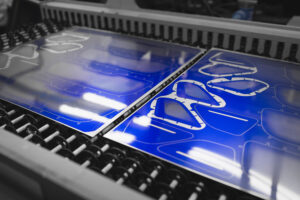 Through the process of photochemical etching, manufacturers can depend on the production of precision engineered components, without the problem of stress. By removing the heat transfer issue of laser cutting and the physical impact force of mechanical techniques, the risk of deformation and subsequent quality control issues are removed. By combining sheet metal with a CAD printed photoresist mask of the required components (which are selectively etched with chemical etchants), photochemical etching offers a less intrusive, more delicate and highly repeatable option for creating intricate components of the highest quality. When we consider applications which require the highest levels of precision and accuracy, together with the particular parameters and limitations of metals like aluminium and titanium, it becomes clear the photochemical etching can be an unrivalled metal machining process. Alongside this capability, the process is able to see components created in short lead times at low cost, with no post-machining required. In practice, benefits offered by photochemical etching – over the traditional methods of laser cutting and stamping – enable manufacturers to secure a clear advantage over competitors by providing OEMs with components which are consistent with their specification, time after time.
Through the process of photochemical etching, manufacturers can depend on the production of precision engineered components, without the problem of stress. By removing the heat transfer issue of laser cutting and the physical impact force of mechanical techniques, the risk of deformation and subsequent quality control issues are removed. By combining sheet metal with a CAD printed photoresist mask of the required components (which are selectively etched with chemical etchants), photochemical etching offers a less intrusive, more delicate and highly repeatable option for creating intricate components of the highest quality. When we consider applications which require the highest levels of precision and accuracy, together with the particular parameters and limitations of metals like aluminium and titanium, it becomes clear the photochemical etching can be an unrivalled metal machining process. Alongside this capability, the process is able to see components created in short lead times at low cost, with no post-machining required. In practice, benefits offered by photochemical etching – over the traditional methods of laser cutting and stamping – enable manufacturers to secure a clear advantage over competitors by providing OEMs with components which are consistent with their specification, time after time.

